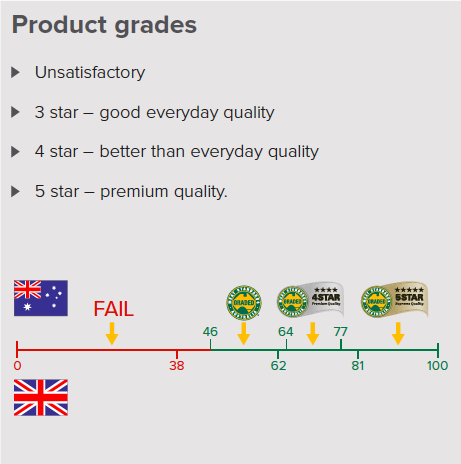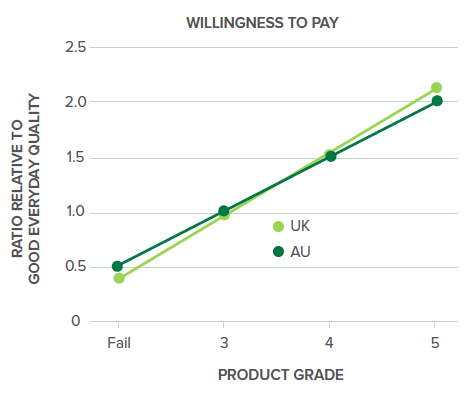International collaboration
In 2017, Australia and the United Kingdom (UK) partnered to test the eating quality of UK beef. Findings suggest that not only are UK consumers sensitive to variable beef eating quality, they are also willing to pay more for premium product.
R&D Snapshot
Meat Standards Australia (MSA) collaborated with the Agriculture and Horticulture Development Board (AHDB) to utilise Australia’s world-leading consumer testing protocols to assist the UK benchmark the eating quality of British beef. This join partnership is part of Australia’s ongoing commitment to growing demand for beef, globally.
ADHB staff were trained in MSA taste testing protocols, which will assist in future research collaboration.
The UK trial consisted of:
- 360 UK consumers tested
- 18 carcases: 9 young bulls, 6 heifers and 3 stters
- Carcases were hung via Achilles Tendon on one side and the other by hip suspension
- All live animal, farm, and transport information was recorded
- All carcases were EUROP and MSA graded prior to boning
- 6 cuts were utilised including the tenderloin/fillet, sirloin/striploin, rump, topside, bullet/knuckle eye and feather/oyster blade
- 21 days ageing in vaccum packaging
- Samples were prepared using the grill cook method.
The state of play
UK: The UK utilises the European conformation classification system for grading beef carcases. This system classifies carcases by estimating yield as graded by carcase conformation (EUROP), fat class (1-5) and weight of carcase (www.gov.uk, 2017) .
Australia: MSA uses 14 different measurements to account for the factors affecting eating quality. Every cut from an eligible carcase is then assigned an eating quality score out of 100. These scores then determine if a product is categorised as a ‘Fail’, 3 star, 4 star or 5 star quality.
The MSA Program measures all factors that affect eating quality:
- Carcase weight
- Cooking method
- Cut ageing
- Hanging method
- Hormonal growth promotants
- Individual cuts
- Marbling
- Milk-fed veal
- Ossification (maturity)
- pH
- Rib fat measurement
- Sex
- Tropical breed content
- Via saleyard
Every cut gets an eating quality scored out of 100.
The development of MSA
In the early 1990s, the Australian beef industry identified variable eating quality as a major contributor to declining beef consumption, and committed research funding to address the problem. The ability to predict the eating quality of cooked beef prior to consumption was identified as the key. Consumer testing protocols were developed, which led to the implementation of MSA grading standards, defined by consumer score outcomes. This approach places consumer satisfaction at the centre of the plate.
MSA has collated results from 800,000 consumer taste tests, in 11 countries, to determine consumer eating quality thresholds i.e. ‘good every day’ quality or 3 stars, ‘better than every day’ or 4 stars, and ‘premium’ or 5 stars. Defined by consumers, these scores are internationally consistent.
Results indicate that UK consumers are willing to pay for a guaranteed eating experience. In fact, in comparison to Australia, UK consumers are slightly more inclined to spend more on a premium product, and even less on unsatisfactory product. UK consumers will heavily discount product that does not meet their expectations, which offers an incentive for the supply chain to produce consistent, quality beef.
Taste the difference
UK consumers will pay accordingly
The UK trial showed that:
1. Sex has an impact on eating quality
A moderate sex effect was evident and supports previous findings that identified product from bulls as having lower eating quality, followed by heifers. Product from steers resulted in higher levels of satisfaction.
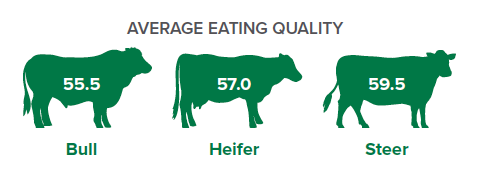
2. Carcase hanging methods can improve eating quality
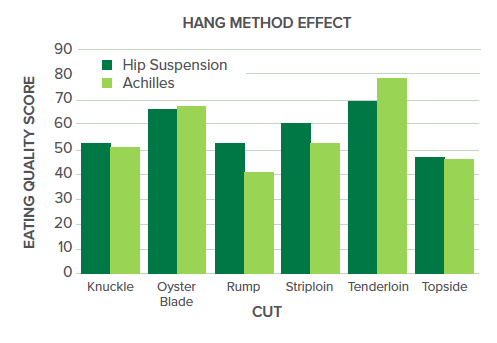
3. Different cuts had different eating quality outcomes, regardless of hang method.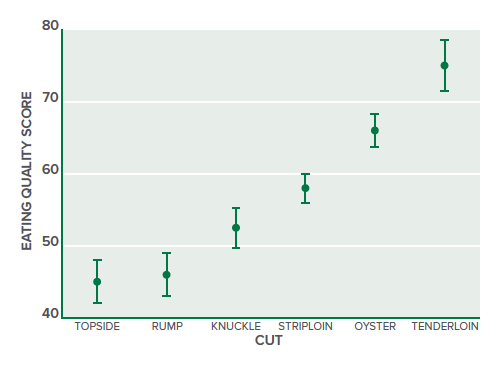
EUROP correlation
Data collected did not show a relationship between the EUROP system and consumer satisfaction with beef eating quality.
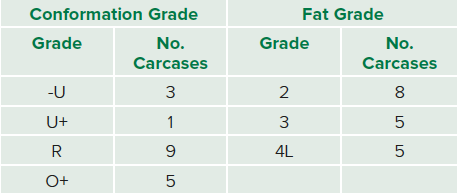
Delivering consumer confidence in eating quality
MSA graded beef can deliver the eating quality outcomes that UK consumers both desire and are willing to pay for. Consumer-defined eating quality scores combined with recommended cooking methods, give consumers confidence that they can purchase and cook beef that will meet their expectations, every time.
FOOD SAFETYPRODUCTION INTEGRITYQUALITY
Article Date: 14th August 2019
